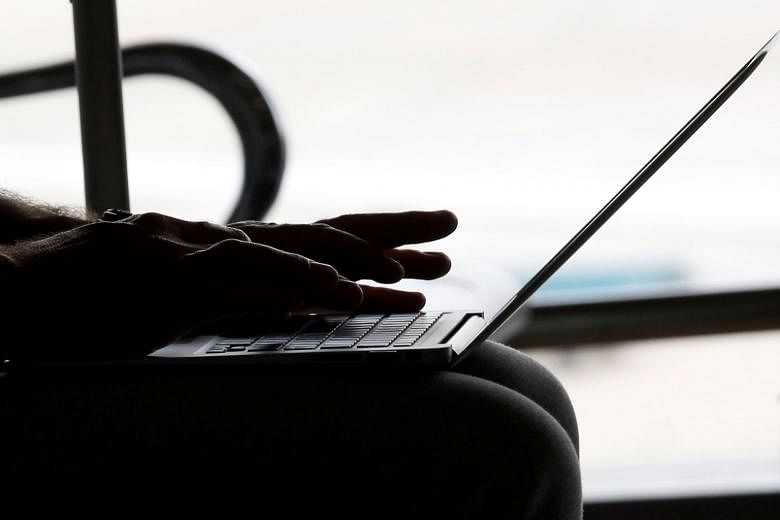More than a decade ago, Mr Dan Russell, a researcher at IBM, won fleeting attention for his e-mail signature: "Join the slow e-mail movement! Read your mail just twice each day. Recapture your life's time and relearn to dream."
That was quixotic even then. While some people are slow to respond to e-mail, most of us are quick to check it. A 2003 study found the typical e-mail is attended to in some manner within six seconds of arrival.
Another study, from 2006, by computer scientist Karen Renaud and her colleagues, found people at their desktop computers would check their e-mail 18 times an hour.
When I think about my own behaviour, 18 times an hour sounds about right. It's like a nervous twitch, with the bonus that I can tell myself and others that I'm the consummate professional.
It is also insane: for all the talk of e-mail overload, most of us do not actually receive 18 e-mail an hour. I don't - not after filtering unsolicited press releases intospam.
One estimate of the typical load is 80-90 e-mail a day, which suggests that half the time Professor Renaud's subjects checked e-mail, they would have found nothing there.
The ubiquity of smartphones, packed with an arsenal of e-messaging alternatives, can only have worsened the compulsion to check for new messages. Mr Russell's plea now seems as counter-cultural as urging people to post sonnets on Tinder. Nevertheless, he was on to something. There are ways in which e-mail might be a lot more useful if we slowed it down.
One reason is that e-mail would probably be less habit-forming when taken in bigger, rarer doses.
The psychologist BF Skinner once found himself running out of food pellets for one of his projects, which like many of his experiments involved rats pushing levers to receive rewards. To eke out his supply of pellets, Dr Skinner restricted their release: rats would get no more than one pellet a minute, no matter how often they tapped the lever.
Rather than discouraging the rats, this intermittent reinforcement soon had them hooked. These days, we're the rats, the computer is our Skinner Box, and e-mail is our intermittently released food pellet.
Mr Russell's call to inaction breaks the cycle of intermittent reinforcement. If you check e-mail no more than twice a day, your unconscious is not wondering whether you've got mail or not. Inevitably, you have, and your dopamine system can stop quivering in nervous anticipation.
Slow e-mail also allows problems to solve themselves in your absence. When a colleague e-mails the entire company asking whether anyone has seen his sentimentally valuable coffee mug, the treasure will be found before anything hits your inbox.
Meetings will be announced, withdrawn because of a typo in the date, then re-announced. It's so much easier to wait.
And slow e-mail should mean more time concentrating on a single task at a time. Gone is the spin-cycle in which we set aside important work to flip open the e-mail browser tab, and then on to Facebook, or Twitter, or Wikipedia or wherever. It takes time to reorient ourselves after these self-interruptions; estimates vary from a few seconds to almost half an hour.
Bearing all this in mind, one might ask what happens when our e-mail is turned off? Researchers Gloria Mark and Stephen Voida held just this experiment, observing what happened to 13 workplace guinea pigs when the researchers disconnected their e-mail.
The subjects were being watched, electronically tracked and even wearing heart monitors. They became less stressed, stayed on task for longer and spoke to their colleagues more. They sometimes felt a little out of the loop, but they survived the experience.
Unplugging for a full working week might be too much for most of us. It's certainly too much for me.
So twice a day it shall be, just like Victorian letter writers. Or nearly so: in fact late 19th-century London enjoyed hourly deliveries, and a correspondence could bounce back and forth within a day.
Letter-writers would often request a reply "By Return Of Post", exhibiting the same nervous urgency as some of my e-mail correspondents today.
Still, there is a qualitative difference between mail once an hour, and mail whenever you happen to press the level for another pellet. We might all benefit by slowing the pace. But how to do it? One possibility is sheer willpower. Good luck with that.
Or you can use some electronic help. For 2018, my resolution is to use Inbox When Ready, a free plug-in for people who access Gmail through Google's Chrome browser. It blocks excessive access to the inbox, and works alarmingly well at dissuading me from checking my e-mail.
I cannot say it has helped with my stress levels just yet. Perhaps I need to give it time.
I wondered what Mr Russell might make of this, so I tracked down what I thought was his current e-mail address and, apologetically, e-mailed with a couple of questions.
Back came the response: "The e-mail account that you tried to reach is disabled." Perfect.
FINANCIAL TIMES

